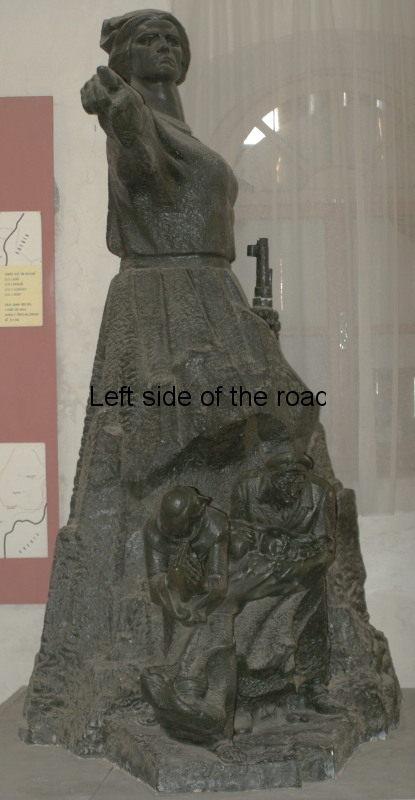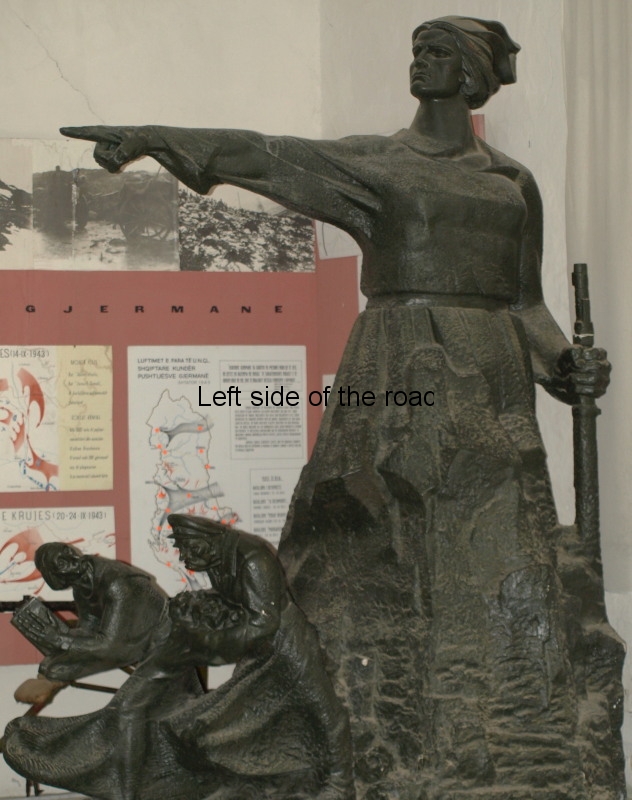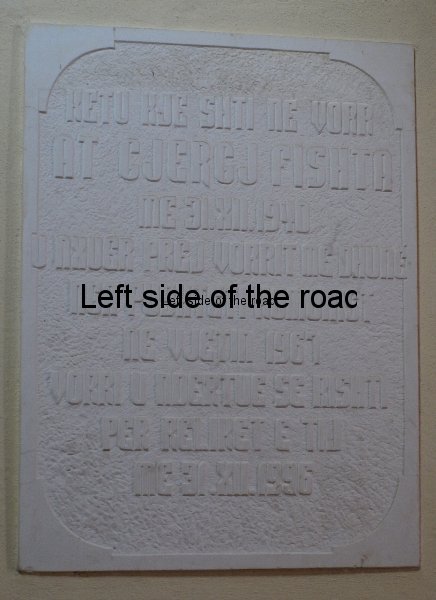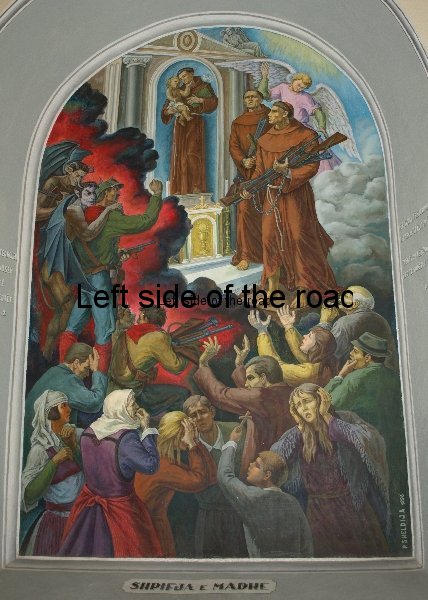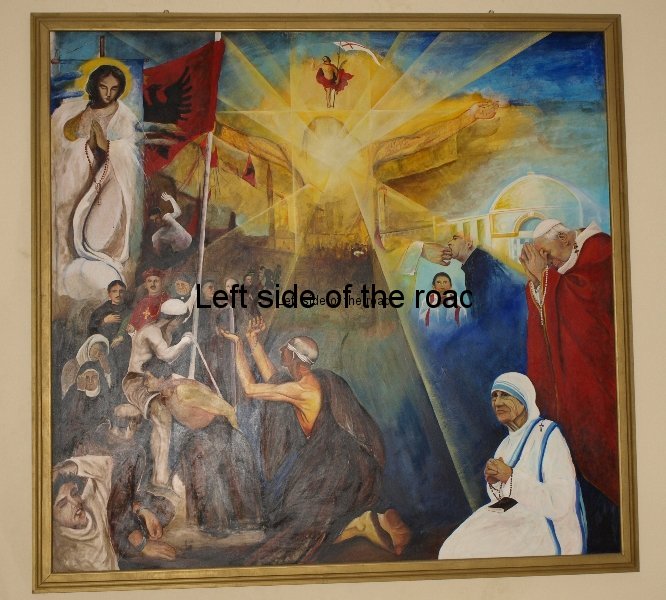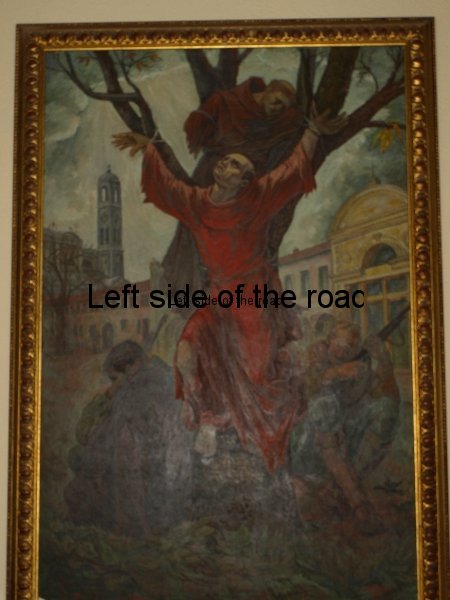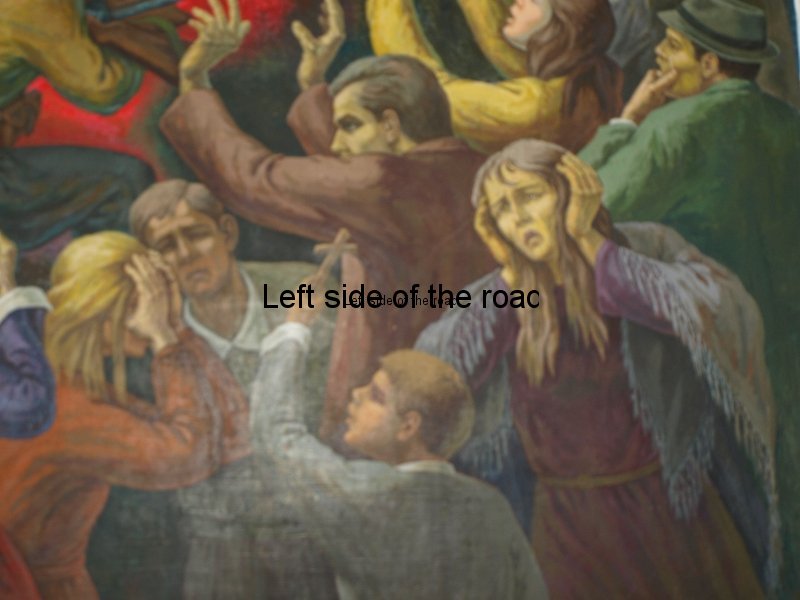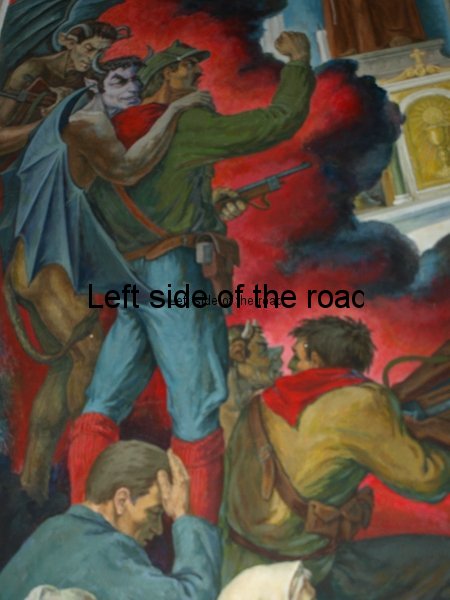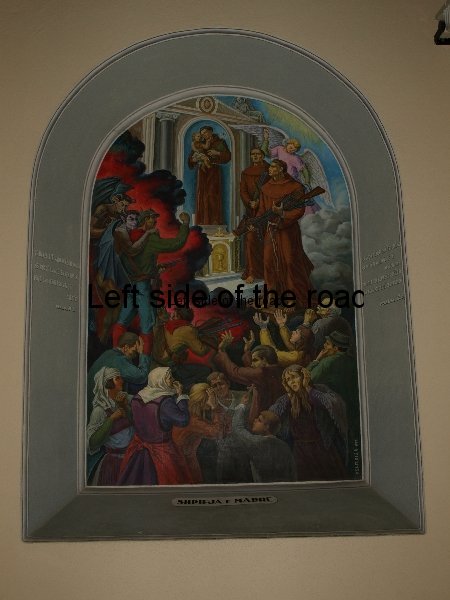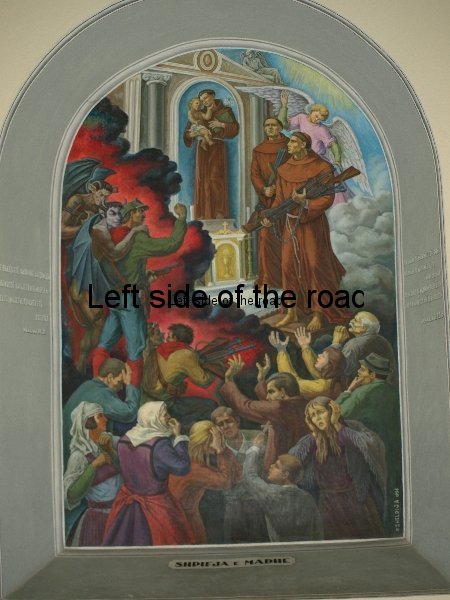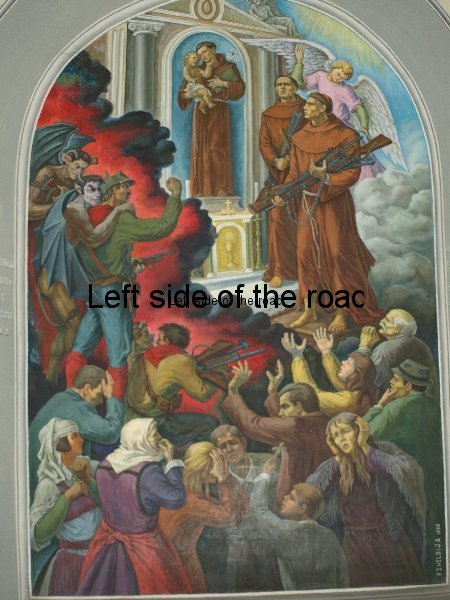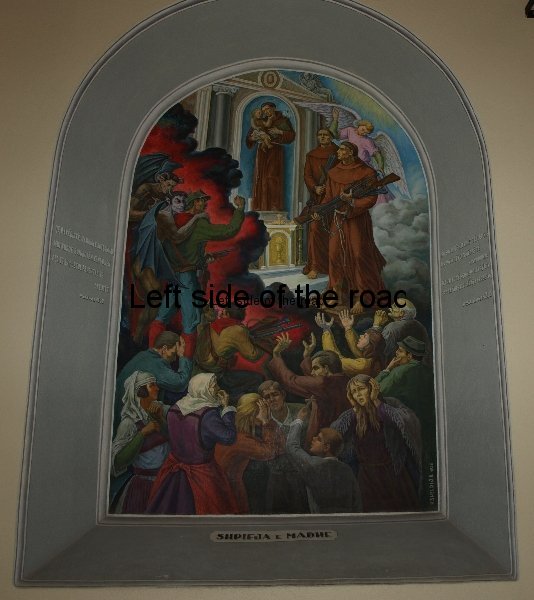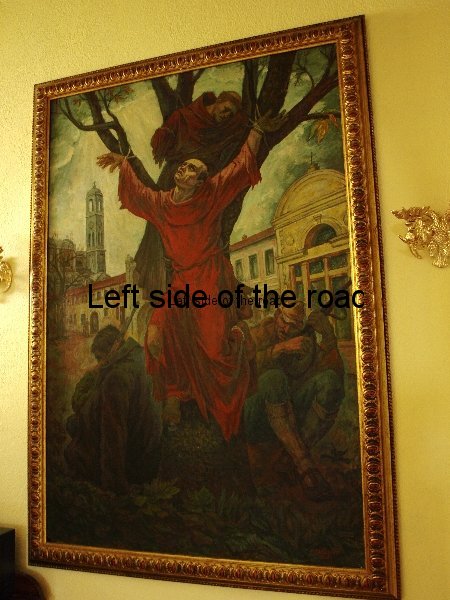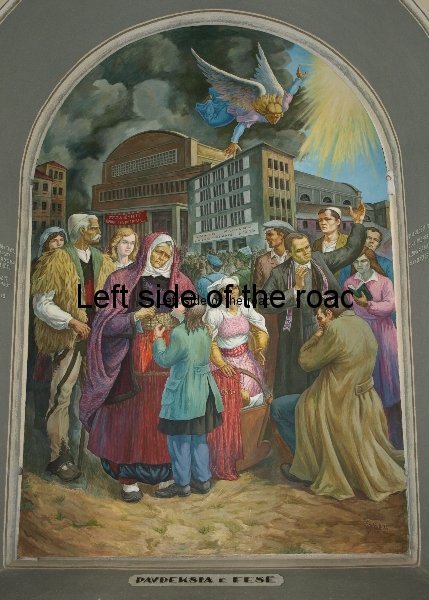
Lenin in the Smolny
The Great ‘Marxist-Leninist’ Theoreticians
Vladimir Ilyich Lenin – individual works, compilations, biographies and including earlier Collected and Selected editions
This page will include individual pamphlets of the works of VI Lenin as well as a more information about his life and work. Available elsewhere on the site are the Collected Works – a total of 47 volumes – which is the most extensive resource in the English language of the ideas of the leader of the Bolshevik Party and the first Socialist State.
(This is an on going project and other material will be added as and when it becomes available in a digital format. If you are after a particular pamphlet and it is not here at the moment then it might appear in the future.)
Collected and Selected Works
Collected Works of V. I. Lenin, 1930s International Publishers Edition, New York,
Volume 13, Materialism and Empirio-Criticism, 1927, 347 pages.
Volume 18, The Imperialist War, 1930, 499 pages.
Volume 21, Book 1, Toward the Seizure of Power, 1932, 305 pages.
Volume 21, Book 2, Toward the Seizure of Power, 1932, 353 pages.
VI Lenin: Selected Works, in 12 volumes, International Publishers, New York, late 1930s, arranged by period and by topic.
Although the later 45-volume Collected Works is more complete and more carefully prepared, this earlier set provides alternate translations which may be helpful in some cases. Plus, this set may facilitate identifying references to Lenin’s specific writings which point to these volumes. Further to that they were also produced at a time when the Soviet Union was following the Socialist Road and the translations were not subject to a Revisionist interpretation, which is the possibility with the versions published in the 1970s.
Volume 1: The Prerequisites of the Russian Revolution (1891-1899), International Publishers, New York, n.d. 1930s, 564 pages.
Volume 2: The Struggle for the Bolshevik Party (1900-1904), International Publishers, New York, n.d. 1930s, 587 pages.
Volume 3: The Revolution of 1905-1907, International Publishers, New York, n.d. 1930s, 649 pages.
Volume 4: The Years of Reaction and of the New Revival (1908-1914), International Publishers, New York, n.d. 1930s, 465 pages.
Volume 5: Imperialism and Imperialist War (1914-1917), International Publishers, New York, n.d. 1930s, 409 pages.
Volume 6: From the Bourgeois Revolution to the Proletarian Revolution (1917), International Publishers, New York, n.d. 1930s, 679 pages.
Volume 7: After the Seizure of Power (1917-18), International Publishers, New York, n.d. 1930s, 535 pages. Different scan, Volume 7: After the Seizure of Power (1917-18), Lawrence & Wishart, London, 1936, 536 pages.
Volume 8: The Period of War Communism (1918-1920), International Publishers, New York, n.d. 1930s, 473 pages.
Volume 9: New Economic Policy; Socialist Construction, International Publishers, New York, 1937, 521 pages.
Volume 10: The Communist International, International Publishers, New York, 1938, 345 pages.
Volume 11: The Theoretical Principles of Marxism, International Publishers, New York, n.d. 1930s, 779 pages.
Volume 12: Theory of the Agrarian Question, International Publishers, New York, 1938, 351 pages. Different scan, Volume 12: Theory of the Agrarian Question, International Publishers, New York, 1938, 349 pages.
VI Lenin: Selected Works, in 12 volumes, Lawrence and Wishart, London, late 1930s and mid 1940s. (Not complete set.)
Selected Works – Volume 3, Lawrence and Wishart, London, 1936, 630 pages.
Selected Works – Volume 4, Lawrence and Wishart, London, 1943, 338 pages.
Selected Works – Volume 6, Lawrence and Wishart, London, ND, late 1930s/mid 1940s?, 660 pages.
Selected Works – Volume 8, Lawrence and Wishart, London, ND, late 1930s/mid 1940s?, 460 pages.
Selected Works – Volume 9, Lawrence and Wishart, London, 1946, 505 pages.
Selected Works – Volume 10, Lawrence and Wishart, London, 1938, 333 pages.
VI Lenin: Selected Works in Three Volumes, Progress Publishers, Moscow 1970/71.
Volume 1, 1970, 890 pages.
Volume 2, 1970, 818 pages.
Volume 3, 1971, 866 pages.
The Essential Lenin in two volumes, Volume 1, Lawrence and Wishart, London, 1947. 768 pages.
VI Lenin – Selected works in one volume, Lawrence and Wishart, London, 1969, 798 pages.
Individual books and pamphlets
The War and the Workers, speech May 27 1917, International, New York, 1929, Little Lenin Library No 24, 36 pages.
The Teachings of Karl Marx, International Publishers, New York, 1930, 48 pages.
The War and the Second International, (London, Martin Lawrence, 1931), Little Lenin Library, Volume Two, 63 pages. Two documents written in 1914, ‘The Collapse of the Second International’ and ‘The War and Russian Social-Democracy’.
The April Conference, International, NY, 1932, 62 pages. Little Lenin Library, Volume Ten. The Conference actually took place from 7th to the 12th May, 1917 (the backward Tsarist state used the Julian calender which was – in 1917 – 13 days adrift from the Gregorian calender used in most of Europe, hence the ‘April’ Conference of 24th to the 29th Old Calender took place in May).
Lenin on Religion, Martin Lawrence, London, N.D. 1930s?), Little Lenin Library, Volume Seven, 56 pages.
State and Revolution, Martin Lawrence, London, 1933, Little Lenin Library, Volume Fourteen, 96 pages.
‘Left wing’ Communism – an infantile disorder, an attempt at a popular discussion on Marxist Strategy and Tactics, Little Lenin Library, Volume 16, Martin Lawrence, London, 1934, 95 pages.
The Paris Commune, Martin Lawrence, London, 1935, Little Lenin Library, Volume Five, 62 pages.
Marx, Engels, Marxism, a collection of articles, Lawrence and Wishart, London, 1936, 225 pages.
The Letters of Lenin, Elizabeth Hill and Doris Mudie, Chapman and Hall, London, 1937, 495 pages.
The Teachings of Karl Marx, Martin Lawrence, London, 1937, Little Lenin Library, Volume One, 47 pages.
Women and Society, an early collection of articles and excerpts, International, New York, 1938, 36 pages.
New data for VI Lenin’s ‘Imperialism, the highest stage of capitalism’, E Varga and L Mendelsohn, Lawrence and Wishart, London, 1938, 322 pages.
Imperialism, the Highest Stage of Capitalism, Lawrence and Wishart, London, 1939, 127 pages. Little Lenin Library, Volume Fifteen.(My copy is seriously damaged, particularly in one place, and so it was impossible to scan pages 82 and 83. In their place I have scanned the missing text from pages 709-711 from ‘The Essential Lenin in Two Volumes, Volume 1, London, Lawrence and Wishart, 1947’. It’s not exactly the same but the closest to the 1939 text I have been able to find.)
War and the Workers, International, NY, 1940, 32 pages. Little Lenin Library, Volume Twenty Four. A reprint of a lecture delivered by VI Lenin in Petrograd on May 27th, 1917, about a month after his return from exile. The manuscript was not discovered until twelve years afterwards and was published for the first time in the Moscow Pravda on April 23rd, 1929.
Left-Wing Communism, an Infantile Disorder, a popular essay on Marxian strategy and tactics, International Publishers, New York, 1940, 95 pages.
Ten Classics of Marxism, Marx, Engels, Lenin and Stalin, International Publishers, New York, 1940, 785 pages.
The Tasks of the Proletariat in our Revolution, Lawrence and Wishart, ND, 1940?, Little Lenin Library, Volume Nine, 52 pages.
On Britain, Lawrence and Wishart, London, 1941, 316 pages. Marxist-Leninist Library, Volume Eighteen, with two Prefaces by Harry Pollitt (1934 and 1941).
The Deception of the People by the Slogans of Equality and Freedom Lawrence and Wishart, London, 1942, Little Lenin Library, Volume Nineteen, 47 pages.
A Dictionary of Terms and Quotations – Compiled from the Works of VI Lenin by Thomas Bell, (London, Lawrence and Wishart, 1942), Little Lenin Library, Volume Twenty Five, 45 pages.
One step forward, two steps back, Lawrence and Wishart, London, 1948, 115 pages.
Materialism and Empirio-Criticism, critical comments on a reactionary philosophy, Lawrence and Wishart, London, 1948, 391 pages.
The Immediate Tasks of the Soviet Government, FLPH, Moscow, 1951, 79 pages.
The National Pride of the Great Russians, FLPH, Moscow, 1951, 15 pages.
Marx, Engels, Marxism, FLPH, Moscow, 1951, 577 pages.
A Characterisation of Economic Romanticism, Library of Marxist-Leninist Classics, FLPH, Moscow, 1951, 232 pages.
The State and Revolution, FLPH, Moscow, ND, 1951?, 218. (Some markings.)
On Britain, FLPH, Moscow, 1959, 624 pages.
Report on Peace – delivered at the Second All-Russian Congress of Soviets of Workers’ and Soldiers’ Deputies, October 26 (November 8) 1917 and Home and Foreign Policy of the Republic – report of the All-Russian Ventral Executive Committee and the Council of People’s Commissars to the Ninth All-Russian Congress of Soviets December 23, 1921, FLPH, Moscow, early 1960s?, 290 pages.
In commemoration of the 90th anniversary of the birth of VI Lenin the Foreign Languages Press in Peking produced a series of books with quotations from the extensive works of the leader of the October Revolution and First Socialist State on various topics pertinent at the time of the struggle against Soviet Revisionism and the restoration of capitalism in the USSR.
This approach to the works of Lenin, where significant quotations were taken from longer works, was the principal that was followed later with the production of the ‘Little Red Book’ of quotations from the works of Chairman Mao at the beginning of the Great Proletarian Cultural Revolution.
We are aware of six volumes in this series.
On War and Peace, 2nd ed., FLP, Peking, October 1960, 84 pages.
On Proletarian Revolution and Proletarian Dictatorship, 2nd ed., FLP, Peking, October 1960, 89 pages.
On the National Liberation Movement, 2nd ed., FLP, Peking, October 1960, 58 pages.
On the Struggle Against Revisionism, 2nd ed., FLP, Peking, October 1960, 98 pages.
On Imperialism, the eve of the Proletarian Social Revolution, 2nd ed., FLP, Peking, October 1960 91 pages.
On the Revolutionary Proletarian Party of a New Type, 2nd ed., FLP, Peking, October 1960, 79 pages.
The National Liberation Movement in the East, FLPH, Moscow, 1962, 348 pages.
Lenin’s Fight Against Revisionism and Opportunism – compiled by Cheng Yen-shih (Peking, FLP, 1965), 275 pages
Against dogmatism and sectarianism in the working class movement, Progress, Moscow, 1965, 235 pages.
On War and Peace – Three articles, FLP, Peking, 1966, 108 pages.
On Culture and Cultural Revolution, Progress, Moscow, 1966, 297 pages.
What the ‘Friends of the People’ are and how they fight the Social-democrats, Progress, Moscow, 1966, 218 pages.
Essential works of Lenin, edited and with an introduction by Henry M Christman, Bantam Books, New York, 1966, 372 pages.
Vladimir Ilyich Lenin, a biography, Progress Publishers, Moscow, 1966, 590 pages.
Karl Marx, a Brief Biographical Sketch with an Exposition of Marxism, FLP, Peking, 1967, 63 pages.
On Youth – Selection of articles from VI Lenin’s Works, (Moscow, Progress, 1967), 298 pages.
The Right of Nations to Self-determination, Progress, Moscow, 1967, 80 pages.
A characterisation of economic romanticism, Progress, Moscow, 1967, 143 pages.
Socialism and War, Progress, Moscow, 1967, 55 pages.
Lenin’s Prediction on the Revolutionary Storms in the East, FLP, Peking, 1967, 15 pages.
On the National and Colonial Questions – Three articles, FLP, Peking, 1967, 40 pages.
On the so-called Market Question, Progress, Moscow, 1968, 51 pages.
Socialism and Religion, Progress, Moscow, 1968, 7 pages.
May Day. May Day action by the Revolutionary Proletariat, Progress Moscow, 1968, 31 pages.
Lecture on the 1905 Revolution, Progress, Moscow, 1968, 19 pages.
Revolutionary Adventurism, Progress Moscow, 1969, 40 pages.
The Tasks of the Youth Leagues, this speech includes Lenin’s most extensive comments on morality and the Marxist-Leninist view of ethics, (Moscow, Progress, 1969), 19 pages.
Party work in the masses, Progress, Moscow, 1969, 170 pages.
On Religion, Progress, Moscow, 1969, 85 pages.
One step forward, two steps back, the crisis in our Party, Progress, Moscow, 1969, 231 pages.
What is to be Done? Progress, Moscow, 1969, 207 pages.
On the Road to Insurrection, N. Lenin (sic), Communist Party of Great Britain, London, n.d., late 1960s?, 519 pages.
The State, (Peking, FLP, 1970), 25 pages. A lecture delivered at the Sverdlov University, July 11th, 1919.
Lenin, Comrade and Man, Progress Publishers, Moscow, ND., 1970s?, 193 pages.
Lenin on Ireland, Irish Socialist Library, New Books, Belfast, 1970, 35 pages.
Letters on Tactics – a Collection of Articles and Letters, (Moscow: Progress, 1970), 104 pages.
‘Left-wing’ Communism – An infantile Disorder, FLP, Peking, 1970, 133 pages.
On the Paris Commune – Selection of articles from VI Lenin’s Works, (Moscow, Progress, 1970), 141 pages.
Two tactics of Social-democracy in the Democratic Revolution, FLP, Peking, 1970, 167 pages.
On Workers’ Control and the Nationalisation of Industry, Progress, Moscow, 1970, 260 pages.
On Lenin, (Dublin, ICO, 1970), 28 pages. 4 articles. The organiser and leader of the Russian Communist Party (On the Fiftieth Anniversary of Lenin’s Birth). Sketches (Comrade Lenin’s Convalescence). On the Death of Lenin (Speech delivered at the Second Congress of Soviets of the USSR, 26th January, 1924). On Lenin (Speech delivered at a Memorial Evening of Kremlin Military Students, 28th January, 1924). Irish Communist Organisation.
On Utopian and Scientific Socialism, articles and speeches, Progress, Moscow, 1970, 254 pages.
Two tactics of Social-Democracy in the Democratic Revolution, Progress, Moscow, 1970, 132 pages.
Two tactics of Social-democracy in the Democratic Revolution – selected quotes.
Where to Begin. Party Organisation and Party Literature. The Working Class and its Press – 3 Articles. Progress, Moscow, 1971, 54 pages.
Can the Bolsheviks Retain State Power, Progress, Moscow, 1971, 63 pages.
The Third International and its place in history, Progress, Moscow, 1971, 51 pages.
Speeches at the Eighth Party Congress, Progress, Moscow, 1971, 86 pages. Held in Moscow from 18th – 23rd March, 1919.
On Peaceful Coexistence, articles and speeches, Progress, Moscow, 1971, 144 pages.
Between the Two Revolutions, Articles and Speeches of 1917, Progress Publishers, Moscow, 1971, 558 pages.
Marxism on the State, (Moscow, Progress, 1972), Preparatory material for the book ‘The State and Revolution’. 134 pages.
Materialism and Empirio-Criticism, FLP, Peking, 1972, 466 pages. Lenin’s major study of materialist philosophy together with strong criticism of its idealist opponents within the Russian revolutionary movement, published in 1908.
About the Press, a collection of articles and excerpts, International Organisation of Journalists, Prague, 1972, 483 pages.
The Revolutionary Phrase, ‘Left-Communist’ mistakes at the Brest Peace, articles and speeches, Progress, Moscow, 1972, 171 pages.
Lenin about the press, International Organisation of Journalists, Prague, 1972, 483 pages.
Speeches at Congresses of the Communist International, 1919-1922, Progress Publishers, Moscow, 1972, 158 pages.
The State and Revolution, FLP, Peking, 1973 The Marxist teaching on the State and the Tasks of the Proletariat in the Revolution. 151 pages.
Lenin and Gorky, letters, reminiscences, articles, Progress, Moscow, 1973, 432 pages.
On the Foreign Policy of the Soviet State, Progress, Moscow, 1973, 481 pages.
How Lenin wrote for the Masses, Three articles, including one from Chairman Mao Tse-tung and one from Nadezhda Krupskaya and one from VI Lenin, (New Era Books, London, 1974), 26 pages.
Marxism and the Liberation of Women, Quotations from Karl Marx, Frederick Engels, VI Lenin, Joseph Stalin and Mao Tse-tung, Union of Women for Liberation, London, n.d., mid-1970s?, 64 pages. Includes a statement of aims of the Union of Women for Liberation.
A caricature of Marxism and Imperialist Economism, (Moscow, Progress, 1974) 61 pages.
Marx, Engels and Lenin on the Irish Revolution, Historical reprints No. 3, Ralph Fox, Cork Workers Club, Cork, 1974, 36 pages.
Lenin on the Jewish Question, International Publishers, New York, 1974, 160 pages.
Economics and Politics in the era of the Dictatorship of the Proletariat, (Peking, FLP, 1975), 14 pages.
What is to be done?, FLP, Peking, 1975, 252 pages.
What is to be Done, an alternative digital version, n.p., n.d., 129 pages.
On Marx and Engels, FLP, Peking, 1975, 98 pages.
The Proletarian Revolution and the Renegade Kautsky, Foreign Languages Press, Peking, 1975, 145 pages.
The Tasks of the Youth Leagues, FLP, Peking, 1975, 22 pages. Speech delivered at the Third All-Russian Congress of the Russian Young Communist League, October 2nd, 1920.
Against Right Wing and Left Wing Opportunism, Against Trotskyism, Progress, Moscow, 1975, 600 pages.
On bourgeois democratic revolution, Novosti, Moscow, 1975, 135 pages.
On the Soviet State Apparatus, articles and speeches, Progress, Moscow, 1975, 447 pages.
On the struggle against Revisionism, Proletarian Publishers, San Francisco, 1975, 98 pages. (Markings throughout.)
Differences in the European Labour Movement, Progress, Moscow, 1976, 11 pages.
One step forward, two steps back, FLP, Peking, 1976, 316 pages.
Marx, Engels, Marxism, Progress, Moscow, 8th rev. ed. 1968 [1976 printing], 515 pages. Most pages well-scanned; a small number too light but mostly legible.
Against revisionism, Progress, Moscow, 1976, 600 pages.
On the Dictatorship of the Proletariat, Progress, Moscow, 1976, 370 pages.
Speeches at Party Congresses, 1918-1922, Progress, Moscow, 1976, 383 pages.
On Scientific Communism, Marx, Engels and Lenin, Progress, Moscow, 1976, 537 pages.
A Great Beginning, FLP, Peking, 1977, 32 pages. Heroism of the Workers in the Rear, ‘Communist Subbotniks’.
The Three Sources and Three Component Parts of Marxism, published in March 1913, (Peking: FLP, 1977), 18 pages.
Last letters and articles, Progress, Moscow, 1977, 70 pages.
Lenin – Selected Works, Progress, Moscow, 1977, 782 pages.
Marx, Engels, Marxism, Progress, Moscow, 1977, 180 pages.
On Dialectical Materialism, Marx, Engels and Lenin, Progress, Moscow, 1977, 422 pages.
The Woman Question, Marx, Engels, Lenin and Stalin, International Publishers, New York, 1977, 96 pages.
On the emancipation of women, Progress Publishers, Moscow, 1977, 136 pages.
Lenin and National Liberation in the East, Progress Publishers, Moscow, 1978, 468 pages.
Alliance of the Working Class and the Peasantry, Progress, Moscow, 1978, 447 pages.
On Literature and Art, Progress, Moscow, 1978, 335 pages.
On Trade Unions, a collection of articles and speeches, Progress, Moscow, 1978, 540 pages.
One Step Forward, Two Steps Back (The Crisis in Our Party), Progress Publishers, Moscow, 1978, 230 pages.
The Revolutionary Phrase, ‘Left-Communist’ mistakes on the Brest Peace (Articles and Speeches), Progress Publishers, Moscow, 1978, 171 pages.
Against imperialist war, Progress, Moscow, 1978, 397 pages
On Participation of the People in Government, a collection of articles and excerpts, Progress, Moscow, 1979, 302 pages.
On the development of heavy industry and electrification, Progress, Moscow, 1979, 203 pages.
On Britain, Progress Publishers, Moscow, 1979, 541 pages.
On the Slogan for a United States of Europe. The Military Programme of the Proletarian Revolution, (Moscow, Progress, 1980) 29 pages. Two articles.
On the October Revolution, Novosti, Moscow, 1980, 120 pages.
On the question of dialectics, Progress Publishers, Moscow, 1980, 126 pages.
On Organization, Proletarian Publishers, Chicago, ND – 1980s?, 235 pages. (Lots of markings and underlining throughout.)
Lenin versus Trotsky and his followers, Novosti, Moscow, 1981, 127 pages. (Pages 106-107 missing.) A late Revisionist compilation of quotes from VI Lenin attacking the ‘enemies from within the Party’.
On the United States of America, a collection of articles and excerpts, Progress, Moscow, 1982, 636 pages.
On State Capitalism during the transition to Socialism, Progress Publishers, Moscow, 1983, 269 pages.
On State Capitalism during the transition to Socialism – selected quotes
Imperialism, the Highest Stage of Capitalism, Progress, Moscow, 1983, 127 pages.
For those who find 127 pages too much here are some selected quotes from this edition of ‘Imperialism, the Highest Stage of Capitalism’.
On Religion, Progress, Moscow, 1984, 83 pages.
Marxism on the State, Progress Publishers, Moscow, 1984, 134 pages.
Lenin’s ‘On Co-operation’, S Serayev, Progress Publishers, Moscow, 1984, 75 pages.
On Lenin’s ‘The Proletarian Revolution and the Renegade Kautsky’, VM Gavrilov, Progress Publishers, Moscow, 1984, 116 pages.
About the Younger Generation, Novosti, Moscow, 1985, 55 pages.
Experience of the CPSU, its world significance, Progress, Moscow, 1985, 588 pages.
On Socialist Ideology and Culture, Progress, Moscow, 1985, 223 pages.
Some selected quotes from ‘On Socialist Ideology and Culture’.
On national liberation and social emancipation, Progress, Moscow, 1986, 342 pages.
Introduction to Marx, Engels, Marxism, Progress, Moscow, 1987, 109 pages. Poor scan, some crooked pages, but fully legible.
Lenin’s ‘What Is To Be Done?’, V. P. Filatov, Progress, Moscow, 1987, 116 pages.
Materialism and empirio-criticism, Progress, Moscow, 1987, 384 pages.
On Lenin’s ‘The State and Revolution’, V. Gavrilov, (Moscow, Progress, 1988). A revisionist interpretation of one of Lenin’s most important works. 106 pages.
On Lenin’s ‘Imperialism, the Highest Stage of Capitalism, I Rudakova, (Moscow, Progress, 1988). A revisionist interpretation of one of Lenin’s most important works. 106 pages.
The Civil War in France: The Paris Commune, Karl Marx and VI Lenin, International Publishers, New York, 1988, 182 pages.
Lenin’s Economic Writings, edited by Meghnad Desai, Lawrence and Wishart, London, 1989, 372 pages.
Learning with Lenin, selected works on education and revolution, Derek R Ford and Curry Malott, Information Age Publishing, Charlotte, 2019, 651 pages.
Two Tactics of Social Democracy in the Democratic Revolution, Foreign Languages Press, Paris, 2021, 149 pages.
On the Communist Press, Lenin, Stalin and Mao Tsetung, Canadian Communist League (Marxist-Leninist), n.d., 200 pages.
The teachings of Karl Marx, November 8th Publishing House, Toronto 2022, 47 pages.
On religion, November 8th Publishing House, Ottawa 2023, 83 pages.
The Life of VI Lenin
Leninism or Trotskyism, Grigory Zinoviev, Joseph Stalin, Lev Kamenev, originally published by the Workers’ Party of America, Daily Worker Publishing, Chicago, 1925. This version FLPH, Moscow, 1949, 75 pages.
Reminiscences of Lenin, Clara Zetkin, Modern Books, London, 1929, 78 pages.
Lenin, by R Palme Dutt, Hamish Hamilton, London, 1933, 96 pages. A short biography by a British Communist.
Lenin on the Woman Question, Clara Zetkin, International Publishers, New York, 1934, 31 pages.
Lenin in action, the early days of Soviet power, personal reminiscences of Lenin in the Revolution of October 1917, by J Stalin and others, Martin Lawrence, London, 1934, 64 pages.
Lenin, D Manulisky, International Pamphlets Number 2, Modern Books, London, 1939, 16 pages.
We have met Lenin, compilation of reminiscences from those who had meetings with Lenin, FLPH, Moscow, 1939, 75 pages.
Lenin – A Biography, Hutchinson, London, ND, early 1940’s?, 204 pages. Prepared by the Marx-Engels-Lenin Institute, Moscow. Published by authority of ‘Soviet War News’. Issued by the Press Department of the Soviet Embassy in London. The closest to an official Soviet biography of VI Lenin available.
My Recollections of Lenin, Klara Zetkin, FLPH, Moscow, 1956, 92 pages.
Reminiscences of Lenin, NK Krupskaya, FLPH, Moscow, 1959, 570 pages.
Pages from Lenin’s life, L Fotieva, FLPH, Moscow, 1960, 220 pages.
VI. Lenin – a Short Biography, translated into English from the 6th Russian edition prepared by the Institute of Marxism-Leninism, CC of the CPSU, 1968. Progress, Moscow, 4th revised edition 1969, 234 pages.
They Knew Lenin, reminiscences of foreign contemporaries, Progress, Moscow, 1968, 287 pages.
Lenin and the Revolution in the East, Novosti, Moscow, 1969, 120 pages.
Lenin through the eyes of the world, letters and comments from abroad, Progress, Moscow, 1969, 184 pages.
Leninist Standards of Party Life, I Pronin and M Stepichev, Progress, Moscow, 1969, 146 pages.
Fine Drawings of Lenin, a collection published by the Communist Party of Germany on the 100th anniversary of the birth of Lenin (1970). 12 pages (missing two drawings).
Lenin as head of government, V Drobizhev, Novosti, Moscow, 1970, 179 pages.
Lenin, James Maxton, Men of Destiny, Heron Books, London, 1970?, 173 pages.
Lenin and India, edited by G Adhikari et al, People’s Publishing House, Delhi, 1970, 236 pages.
Lenin and the Russian Revolution, Christopher Hill, Penguin, London, 1971, 180 pages.
Lenin’s Teachings and Cause are Immortal, from the record of the Scientific and Theoretical Conference held in Moscow in January 1974 on the occasion of the 50th anniversary of Lenin’s death, Novosti, Moscow, 1974, 40 pages.
Lenin – Life and Work, by V. Zevin and G. Golikov, (Moscow, Novosti, 1975), 228 pages. A revisionist biography of VI Lenin. Second edition, 1977.
Lenin and Modern Natural Science, edited by M. E. Omelyanovsky, Progress, Moscow, 1978, 432 pages.
Lenin: Life and Works, a chronology of Lenin’s life, by Gerda and Hermann Weber, MacMillan, London, 1980, [Originally published in Munich in German in 1974], 240 pages.
Leninism and the agrarian and peasant question, Volume 1, Lenin’s agrarian programmes for the Three Russian Revolutions, Progress, Moscow, 1981, 514 pages.
Leninism and the agrarian and peasant question, Volume 2, historical experience of the CPSU in carrying out Lenin’s co-operative plan, Progress, Moscow, 1981, 597 pages.
The Central Lenin Museum, Moscow – a guide. (Moscow, Raduga, 1986), 160 pages. A guide to the now destroyed Museum dedicated to the life and work of VI Lenin.
Vladimir Ilyich Lenin, Pages from his life, Volume 1, with reminiscences of his associates, Novosti, Moscow, 1990, 174 pages.
Vladimir Ilyich Lenin, Pages from his life, Volume 2, The First Russian Revolution 1905-07, Novosti, Moscow, 1990, 173 pages.
On the so-called ‘Lenin Testament’. A pamphlet produced by W.B. Bland (then of the Communist League UK) of a presentation given to the Stalin Society (UK) in 1991. The ‘Lenin Testament’ was a document that was used by Trotskyites and other anti-Bolsheviks in an attempt to usurp the leadership of the Communist Party of the Soviet Union (Bolshevik) after the death of Comrade Lenin in 1924. In an effort to maintain Party unity the document was presented to 13th Party Congress in May 1924 where it was overwhelmingly rejected as having no importance in the choice of the Party leadership, with not even Trotsky voting for it.
Reminiscences of Lenin, Nadezhda Krupskaya, International Publishers 1970, this version published as an e-book by the Anarcho-Communist Institute, 2015, 425 pages.
VI Lenin – on the Woman Question, Clara Zetkin’s recollections of Lenin, November 8th Publishing House, Ottawa 2023, 47 pages.
Compilations from the works of VI Lenin with other great Marxists
A Handbook of Marxism, with selections from the works of Marx, Engels, Lenin and Stalin, International Publishers, New York, 1935, 1082 pages,
Strategy and Tactics of the Proletarian Revolution, (N.Y., International, 1936), 95 pages. Consists of a series of brief extracts mostly from the works of Lenin, Stalin and from some reports of the Comintern.
The Dictatorship of the Proletariat, articles and extracts from the works of Marx, Engels, Lenin and Stalin, compiled and arranged by V. Bystryansky and M. Mishin, ‘Readings in Leninism’ series, (NY: International, 1936), 132 pages.
Lenin and Stalin on Youth, (London, Lawrence and Wishart, 1940), Little Lenin Library, Volume Twenty One, 48 pages.
Lenin and Stalin on The State, (London, Lawrence and Wishart, 1942), Little Lenin Library, Volume Twenty Three, 48 pages.
Dialectical and Historical Materialism, edited by LL Sharkey and S Moston, Current Book Distributors, Sydney, 1945, 152 pages.
On Scientific Communism, Marx-Engels-Lenin, Progress, Moscow, 1967, 537 pages.
Selections from V. I. Lenin and J. V. Stalin on the National and Colonial Question, Calcutta, 1970, 244 pages.
Selected Writings by Marx, Engels, and Lenin On Anarchism and Anarcho-Syndicalism, International Publishers, New York, 1972, 362 pages.
K. Marx F. Engels V. Lenin On Historical Materialism – a collection, Progress, Moscow, 1972, 751 pages.
Marx, Engels and Lenin: On the Dictatorship of the Proletariat, a collection of quotations, (Peking: FLP, 1975), 52 pages. (Some underlining.) This collection also appeared in Peking Review on February 28, 1975.
Marx, Engels, Lenin On Communist Society – a collection, Progress, Moscow, 1978, 157 pages.
Last letters and articles of VI Lenin and On Lenin by JV Stalin, November 8th Publishing House, Ottawa, 2022, 152 pages.
V.I. Lenin and J.V. Stalin, Marxism and Revisionism, November 8th Publishing House, Toronto, 2022, 119 pages.
Lenin and Stalin on the development of the National Question, M.D. Kammari, November 8th Publishing House, Ottawa, 2023, 153 pages.




